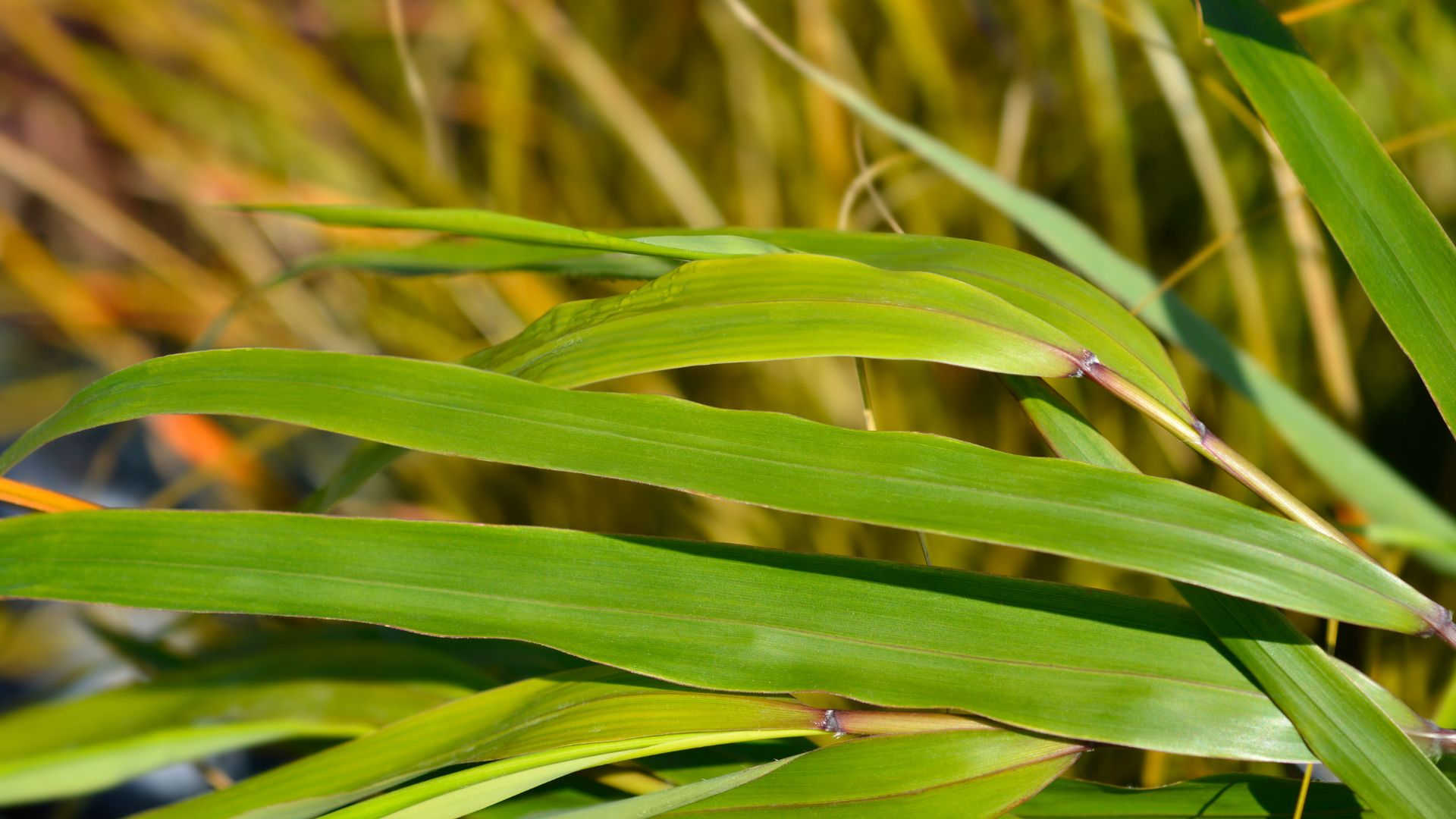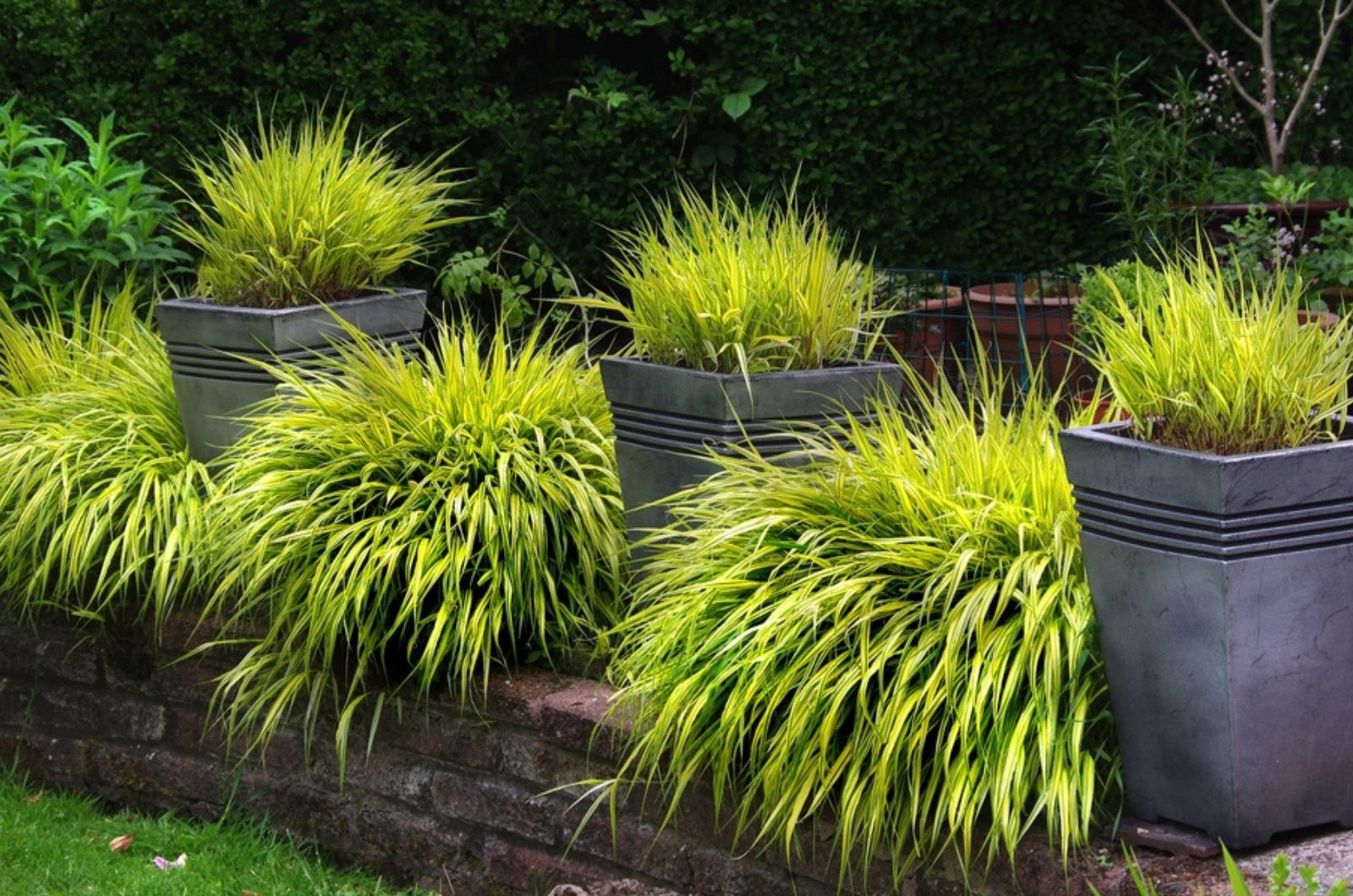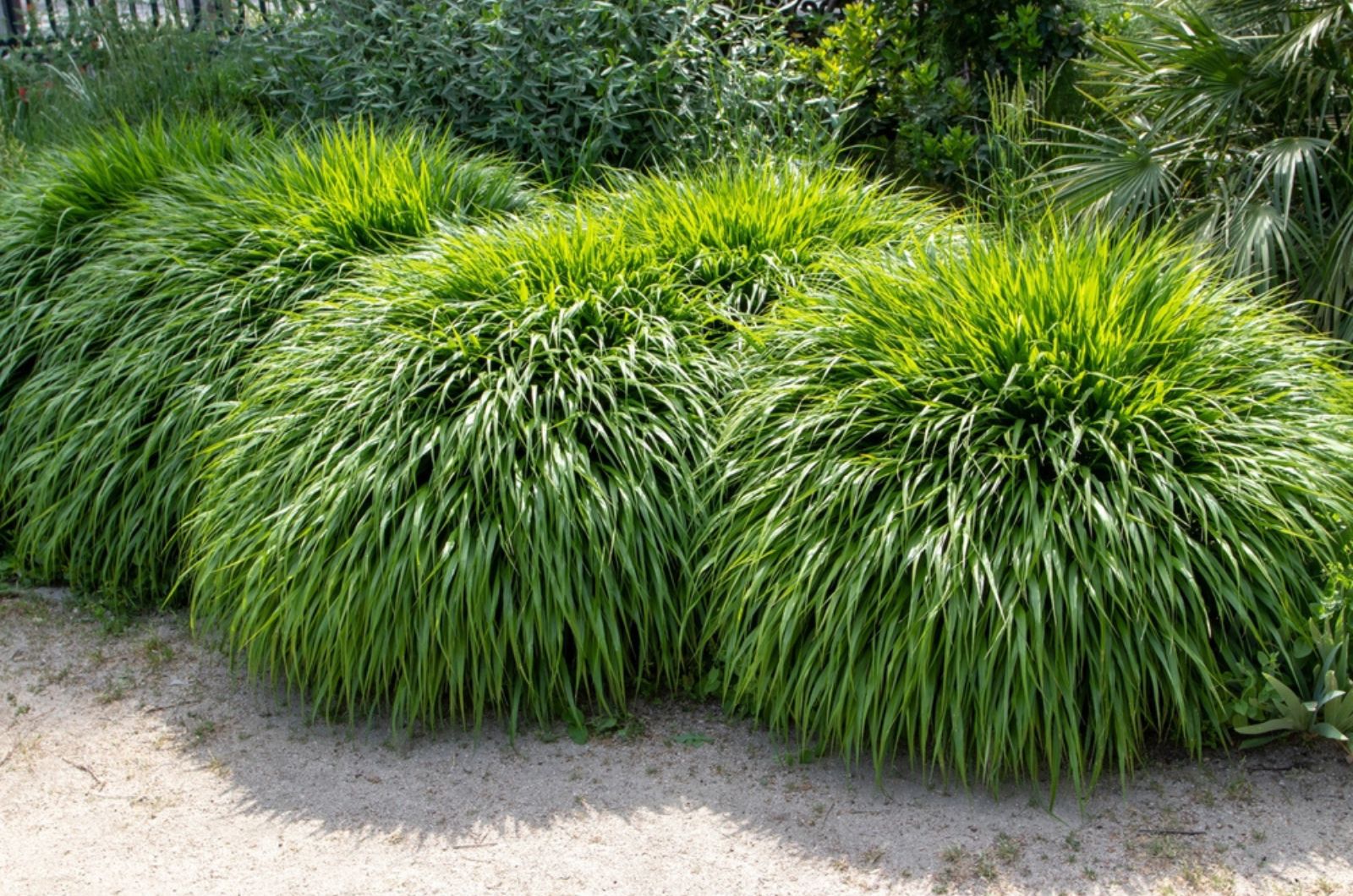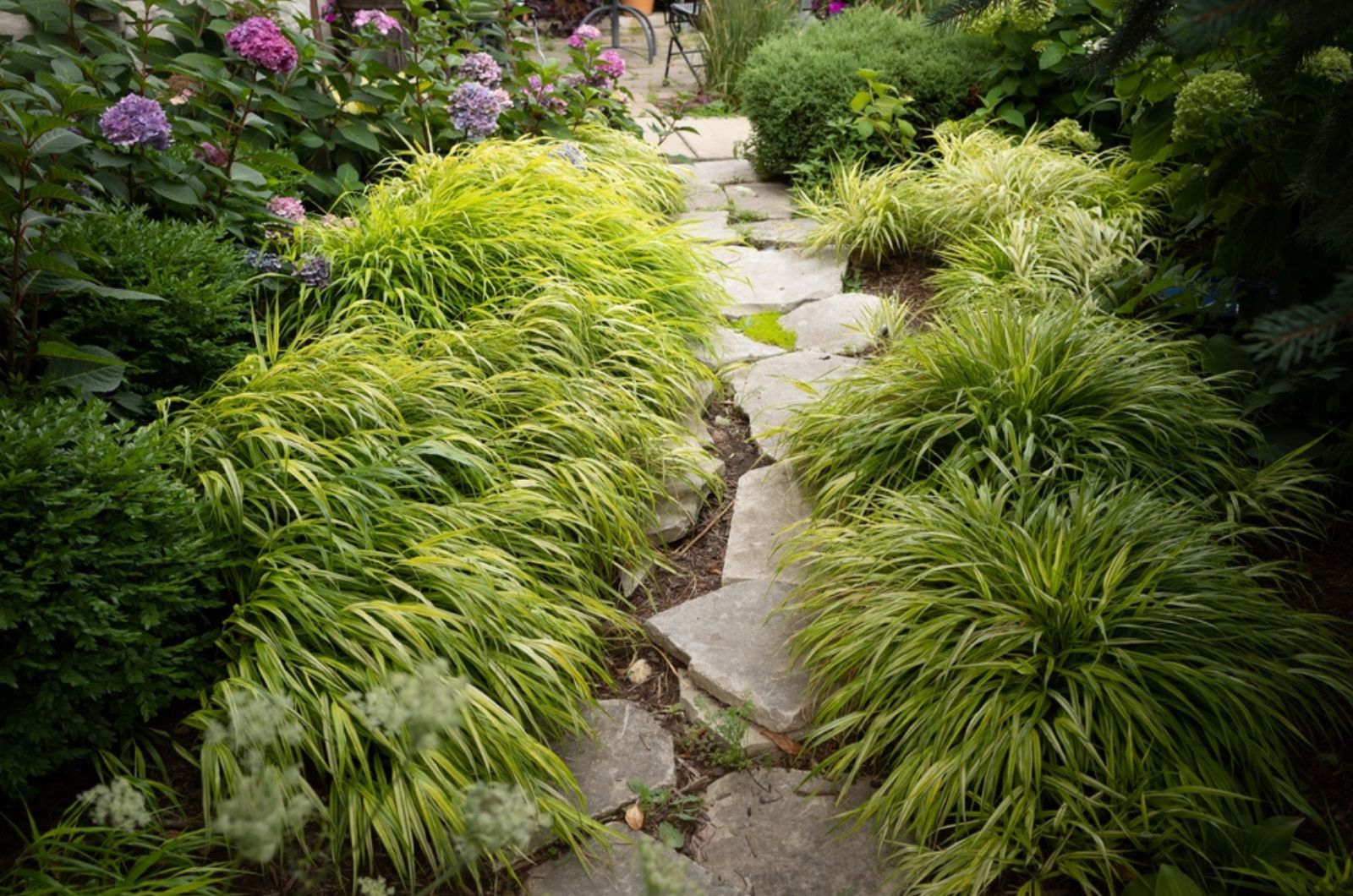If you have been looking for some colorful ornamental grass, I have a perfect plant for you: Hakone grass. The term Hakone is a tribute to a Japanese town of the same name, but the plant also goes under the name Japanese forest grass.
This grass type is getting more and more popular and the main reason is the splendid 10-inch long foliage that changes its hue depending on the season.
You can choose between standard green varieties or variegated species, such as Albostriata and Alboaurea.
Appearance isn’t the only thing this plant has to offer, so let’s see why you should add beautiful Hakone grass to your landscaping!
Why Grow Hakone Grass
I’m sure the first thing that caught your eye is the plant’s ability to change hues during the season.
Hakone grass develops into clumps and turns to pink or burgundy as soon as fall arrives. If your landscape needs more visual appeal, there you have it. Imagine your fall garden display when the Hakone grass leaves start swaying on windy days.
When temperatures drop and winter arrives, the leaves will eventually turn brown and wither away.
These are perennial plants and you can use them in various ways. For instance, they can be used as focal points, border plants, or you can fill gaps in your garden.
That’s not all; Japanese forest grass generates lovely greenish-yellow blossoms during the summer.
If you’ve been thinking that appearance is the only thing this grass species has to offer, well, you’re wrong. There are actually multiple other benefits of Hakone grass.
First, rabbits and deer won’t come near this grass, so if your area is frequently visited by these animals there’s no need to worry anymore.
Second, these plants won’t be affected by black walnut trees, and that’s a huge benefit because these trees may kill other plants with the chemicals they release. (1)
Hakone grass species tolerate various light levels and even change colors depending on the light level. If you plant them in a shaded spot, the leaves will be standard green. Partially shaded conditions will cause this grass to turn yellow.
The only thing to pay attention to is not to expose this grass to full sun if you live in hot and dry climates because the harsh sun rays can scorch the leaves.
These grasses aren’t fussy over the growing conditions; you don’t need to prune it frequently and it isn’t susceptible to common garden pests.
The growth rate of grass is an important factor to consider, especially if you’re dealing with non-native species. Well, Hakone grass wins this battle too because it’s a slow grower and won’t take over your yard.
Landscaping With Hakone Grass
This grass will definitely add a luxurious touch to your landscape. The densely packed foliage allows you to use the plant as a ground cover.
If you have a completely shaded area in your garden, you can plant a golden-yellowish All Gold variety. It will thrive in such light conditions and will add a splash of color.
Those who have woodland gardens may already know that grasses shouldn’t be part of such a style, but Hakone grass isn’t something you should avoid in your woodland garden; simply use it as understory vegetation.
If you like this plant but your garden is very small, don’t worry, Hakone grass responds well to container cultivation.
Leaves will cascade over container edges, which will add an elegant touch to your landscape. If you decide on this gardening method, make sure to plant your Hakone grass in a free-draining soil that retains enough moisture.
This plant isn’t resistant to cold temperatures, so it’s advisable to protect it by adding a layer of mulch near the plant’s base. Alternatively, take a larger container and cover your potted Hakone grass.
If your garden needs a focal point, Japanese forest grass will do the job. You can plant it near garden edges or along pathways to get a fantastic garden display.
You can also grow it near other shade-loving perennials or plants that produce blossoms in a blue or purple color.
But no matter where you plant it, Hakone grass will transform your landscape into a spectacular oasis of pure elegance!
References
1. Black Walnut toxicity. (n.d.). Wisconsin Horticulture.




